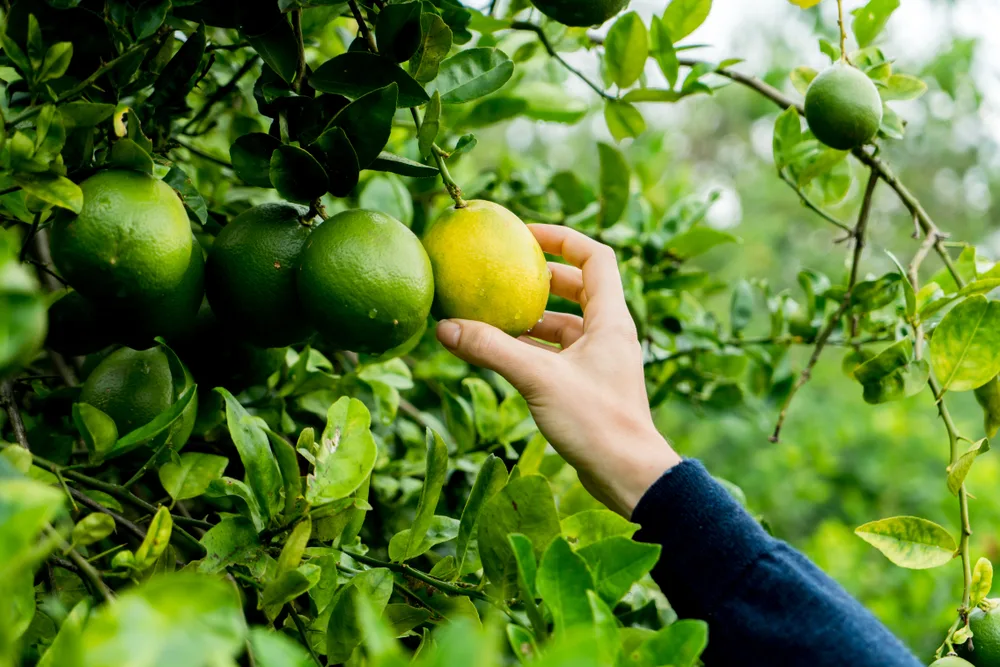Lemon trees are attractive and make great ornamental plants in containers or in the garden.
Like all citrus trees, they need maintenance to produce ripe, flavorful fruit. Without proper care, they can develop bitter, juiceless fruit that looks unappealing.
So, what do you do if your lemon tree fruit doesn’t turn yellow? Is there a way to fix lemons that stay green?
Why Are My Lemons Staying Green?

Lemon trees require a lot of sunlight, a protected spot, and sufficient moisture.
Pruning is essential for all citrus trees to let sunlight in, ensure good air circulation, maintain shape, and facilitate harvesting.
Regularly feed the tree with an all-purpose soluble fertilizer (18-18-18). Keep reading if you’re doing all this and still wondering why your lemons stay green.
Unlike rock fruits, apples, and pears, citrus trees don’t ripen the same way. They mature gradually and get sweeter over time; the fruit can take up to nine months to ripen fully.
Once mature, the fruit can stay on the tree for a few weeks without ripening further.
One reason your lemons might not be turning yellow is that they haven’t been on the tree long enough. If that’s the case, you just need to be patient.
However, if you’ve ruled this out, other factors, like inadequate light or bad weather, could be causing your lemons to stay green.
The most common reason citrus fruit doesn’t ripen is a lack of sunlight. The tree might be too shaded or planted too close together.
Weather conditions can also affect lemon trees and slow down ripening. Irregular watering impacts how the tree produces and matures fruit.
Drought conditions stress the tree, resulting in juiceless fruit that splits or doesn’t ripen. All citrus trees need consistent watering, depending on the weather, season, soil type, and whether the tree is in a container or on the ground.
In very hot, dry conditions, citrus trees may need as much as 37 gallons (140 liters) of water per day, depending on their size.
Lastly, diseases might cause lemons not to turn yellow, but if a tree is diseased, you’ll likely see other signs of distress beyond just green fruit. Stressed trees are more prone to disease, so regular watering is crucial.
Sometimes, commercial citrus growers use dyes to enhance fruit color.
In-home gardens, yellow isn’t always an indicator of ripeness; the fruit might be ripe even if it’s green. The best way to tell is to taste the fruit for sweetness and juiciness to determine if it’s ripe.
